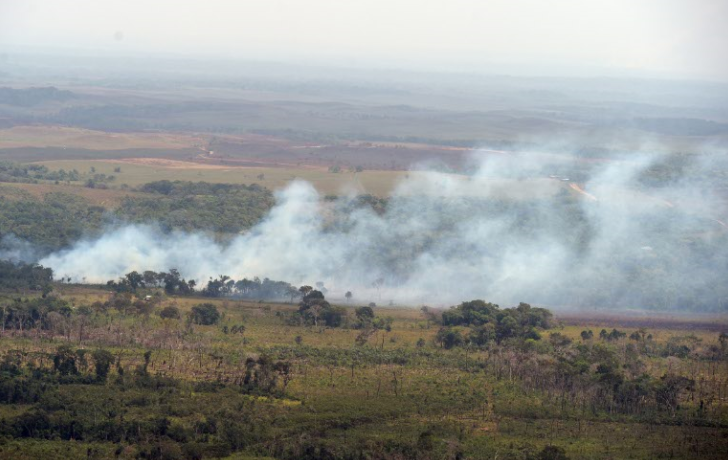
A wildfire is an unplanned fire that causes damage to natural areas such as grassland, prairie or forest. It is often caused by humans or a natural phenomenon such as lightning and may happen anywhere or at any time. However, half of the wildfire cases that are recorded have unknown sources.
Wildfire smoke can affect people and our surroundings even after it dissipates. Recently, Australia has suffered the worst wildfires seen in decades, with large parts of the country devastated since the fire season began in late July last year.
Its billowing pillars of burned particles sailed across the globe on high winds on the stratosphere, while hazy clouds left the air dangerous to breathe for months. Though we don't see it any longer from the ground or satellite images, wildfire smoke can still stick around for some time.
ALSO READ: Polar Bears Resorting to Cannibalism, Experts Say
Eventually, those particles will make their way back to Earth and will then mix with the air affecting the quality of the air that we breathe. With this in mind, it begs the question: what happens to all those particles and gases after the wildfire goes out?
The Mobility of the Smoke
The end destination of the particles and gases that comprise the smoke after the fir eddies out depends on some factors, according to Bob Yokelson, an atmospheric chemist at the University of Montana.
First, the weather can affect its movement in the atmosphere. If it rains immediately after a fire, then the smoke will only have a short journey. Since a lot of the particles and gases of the smoke are soluble, they will be absorbed into clouds and rain droplets and then back to the Earth.
The second factor is the size of the particle. Bigger particles are heavy and pulled back by gravity and back to the ground; examples of which are soil dust ash, and microscopic charcoal. Smaller particles or organic aerosols, however, are scattered by the winds and make it farther across the globe.
The third factor is how high the smoke is interjected into the atmosphere because it influences the distance it travels. Those smoke particles released at a higher layer of the atmosphere called the stratosphere have greater chances of quickly traveling the world and may last for weeks in the absence of rain to pull them out.
ALSO READ : Remember the Movie 'Water World'? The Earth May Have Looked Like That 3 Billion Years Ago
The wind direction and where a fire occurred also influences where the particle ends up. Sometimes it reaches major cities or the glaciers and ends up to mountain glaciers depending on what direction the wind is blowing.
Yokelson said that smoke particles may end up in the air for two to three weeks. According to research by Karl Froyd and Greg Schill, scientists who study airborne particles at the University of Colorado Boulder, smoke particles are constant in the air all year long.
Wildfire and Health
V. Faye McNeill, a chemical engineer who studies atmospheric chemistry at Columbia University writes in an email to Discovery describing what effects could wildfires have on humans and to the environment: "Large wildfires can cause decreased visibility and respiratory symptoms hundreds of miles away from the fire."
Indeed, wildfire smokes have a lot of negative effects on our health. For example, If it reaches to a major city, the lower concentration of particles can combine with the existing pollution of that place, said by Yokelson.
Some smoke particles can help form clouds that can make a cooling effect on our atmosphere as it scatters. However, soot and black carbon reduce relative humidity and have a "cloud-burning effect" as described by Yokelson.
Fires also produce carbon dioxide that is necessary for plant growth. For example, with the many sub-Saharan grassland fires, it was able to reabsorb the carbon dioxide immediately and the grass starts to grow back quickly too. However, in situations where dense forests are replaced with agriculture, all that carbon from the fire will stay in the atmosphere and contributes to the climate.
As they say, what goes around comes back around. So whether it is a one day or month-long wildfire, the smoke particles will still fall back on Earth. Often, these contain potassium and nitrogen nutrients that can help fertilize the soil. But if these particles fall on glaciers or ice sheets, they melt faster and affecting organisms that benefit through living on the ice.
© 2025 ScienceTimes.com All rights reserved. Do not reproduce without permission. The window to the world of Science Times.










